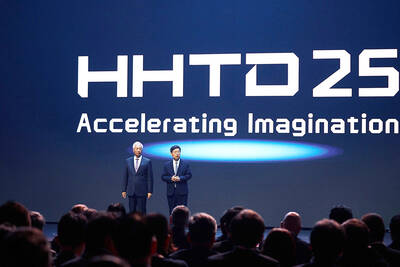Is the unknown creator of bitcoin writing a book about it?
That could be concluded from a cryptic message posted on Friday at a Web site possibly linked to Satoshi Nakamoto, the pseudonym used by the person or people who released the original bitcoin white paper in 2008.
The site details the “first excerpt to a literary work consisting of two parts” that promises to be “a short story if you will, with some of the most brought up questions and answers. I wanted the people and the facts to be known.”
In true Nakamoto style, it even includes a cryptogram, which purports to reveal names related to the title of the book.
The answer to the cryptogram appears to be “honne and tatamae,” or “tatemae,” which according to Wikipedia is a Japanese expression that describes “the contrast between a person’s true feelings and desires” and “the behavior and opinions one displays in public.”
Bloomberg News could not independently verify the authenticity of the post or excerpt.
Many journalists have tried and failed to unearth the true identity of Nakamoto, yet it is still a secret within the cryptoworld.
In the excerpt posted on the Web site, the author lists pioneers in early digital asset research such as Adam Back, Wei Dai, David Chaum and Hal Finney.
There are also bits of strangeness in the text, such as the author referring to the “first” genesis block for bitcoin. This was the first block in the bitcoin blockchain released by Nakamoto in early 2009, and yet this new excerpt seems to imply that there are more than one.
The author claims that Nakamoto got involved in the cypherpunk movement that spawned bitcoin as a 14-year-old.
“I’m going to take a moment here to explain something. I know that some of you might be reading this or hearing about it for the first time, might not know, so I should state it publicly, although by now it is assumed, but has never been publicly stated before, so I will make it official,” the author writes.
“Satoshi Nakamoto is not a real name. Specifically, not a legal name. It is primarily the essence of thoughts and reason,” the author says.
In any event, a book by the real Nakamoto would be devoured by bitcoin enthusiasts around the world. Maybe the author gives it away with the first line in the excerpt: “It was inevitable.”
Bitcoin developed after the 2008 global financial crisis traded at as little as US$0.30 at the end of 2010.
The token increased more than 1,400 percent last year as bitcoin exploded onto the mainstream, but the digital asset declined most of this year and crashed through the US$6,000 threshold last week for the first time since February, losing about two-thirds of its value since reaching a record high of nearly US$20,000 in December last year.
Bitcoin rose 8 percent to US$6,338.22 on Saturday as of 5:30pm in New York, according to Bitstamp prices.
While it is difficult to identify specific catalysts for bitcoin’s decline, the bursting of a speculative bubble might be at the heart of the matter amid questions about the virtual currency’s long-term prospects.

Shiina Ito has had fewer Chinese customers at her Tokyo jewelry shop since Beijing issued a travel warning in the wake of a diplomatic spat, but she said she was not concerned. A souring of Tokyo-Beijing relations this month, following remarks by Japanese Prime Minister Sanae Takaichi about Taiwan, has fueled concerns about the impact on the ritzy boutiques, noodle joints and hotels where holidaymakers spend their cash. However, businesses in Tokyo largely shrugged off any anxiety. “Since there are fewer Chinese customers, it’s become a bit easier for Japanese shoppers to visit, so our sales haven’t really dropped,” Ito

The number of Taiwanese working in the US rose to a record high of 137,000 last year, driven largely by Taiwan Semiconductor Manufacturing Co’s (TSMC, 台積電) rapid overseas expansion, according to government data released yesterday. A total of 666,000 Taiwanese nationals were employed abroad last year, an increase of 45,000 from 2023 and the highest level since the COVID-19 pandemic, data from the Directorate-General of Budget, Accounting and Statistics (DGBAS) showed. Overseas employment had steadily increased between 2009 and 2019, peaking at 739,000, before plunging to 319,000 in 2021 amid US-China trade tensions, global supply chain shifts, reshoring by Taiwanese companies and

Taiwan Semiconductor Manufacturing Co (TSMC) Chairman C.C. Wei (魏哲家) and the company’s former chairman, Mark Liu (劉德音), both received the Robert N. Noyce Award -- the semiconductor industry’s highest honor -- in San Jose, California, on Thursday (local time). Speaking at the award event, Liu, who retired last year, expressed gratitude to his wife, his dissertation advisor at the University of California, Berkeley, his supervisors at AT&T Bell Laboratories -- where he worked on optical fiber communication systems before joining TSMC, TSMC partners, and industry colleagues. Liu said that working alongside TSMC

TECHNOLOGY DAY: The Taiwanese firm is also setting up a joint venture with Alphabet Inc on robots and plans to establish a firm in Japan to produce Model A EVs Manufacturing giant Hon Hai Precision Industry Co (鴻海精密) yesterday announced a collaboration with ChatGPT developer OpenAI to build next-generation artificial intelligence (AI) infrastructure and strengthen its local supply chain in the US to accelerate the deployment of advanced AI systems. Building such an infrastructure in the US is crucial for strengthening local supply chains and supporting the US in maintaining its leading position in the AI domain, Hon Hai said in a statement. Through the collaboration, OpenAI would share its insights into emerging hardware needs in the AI industry with Hon Hai to support the company’s design and development work, as well